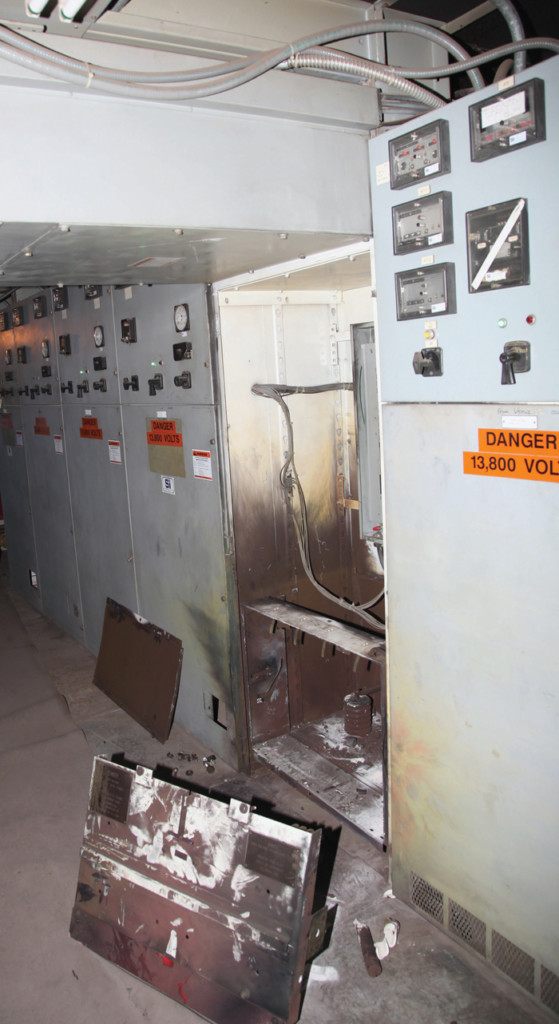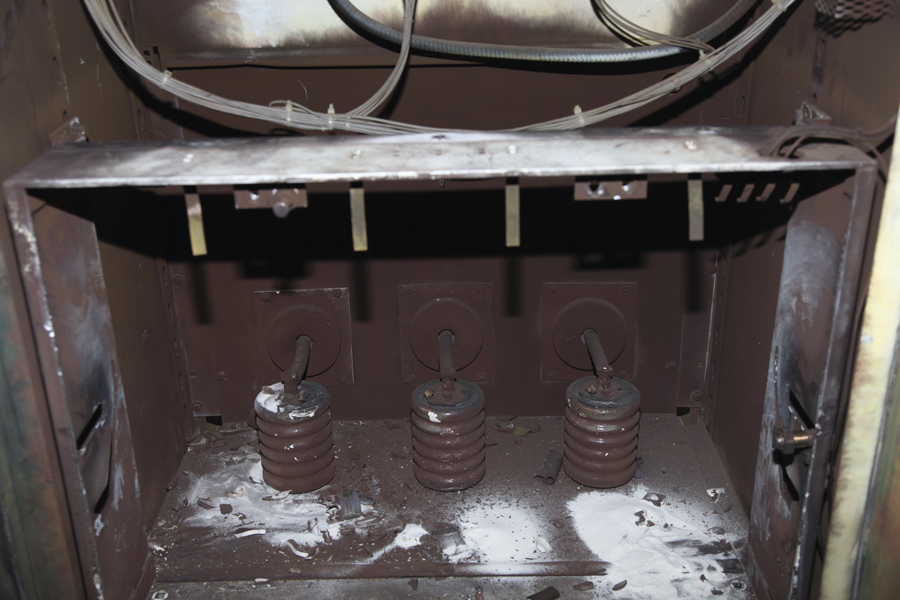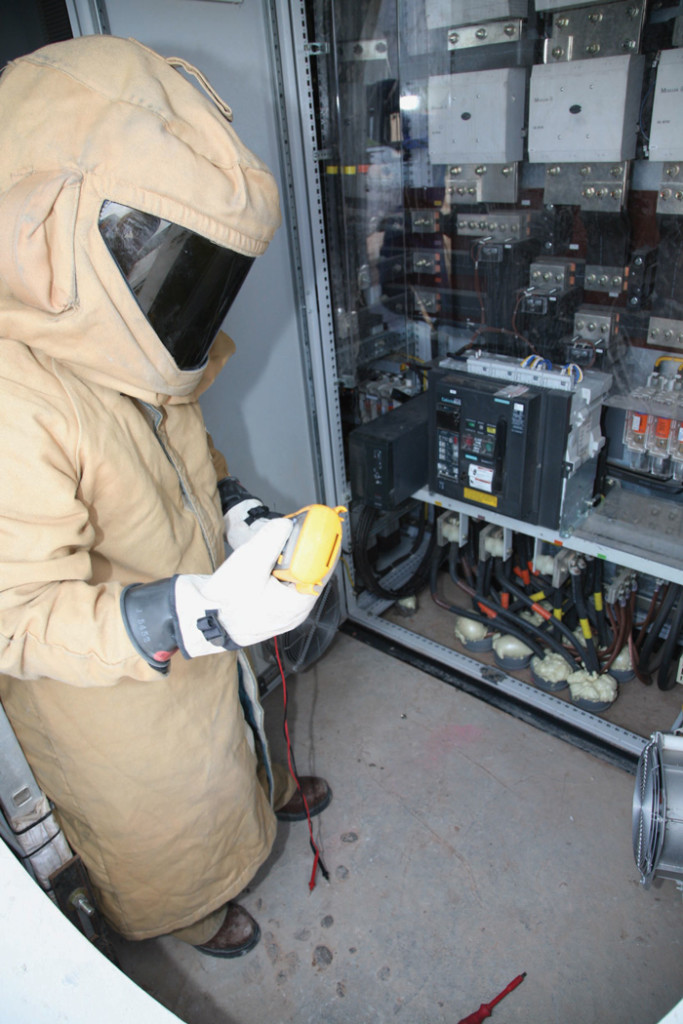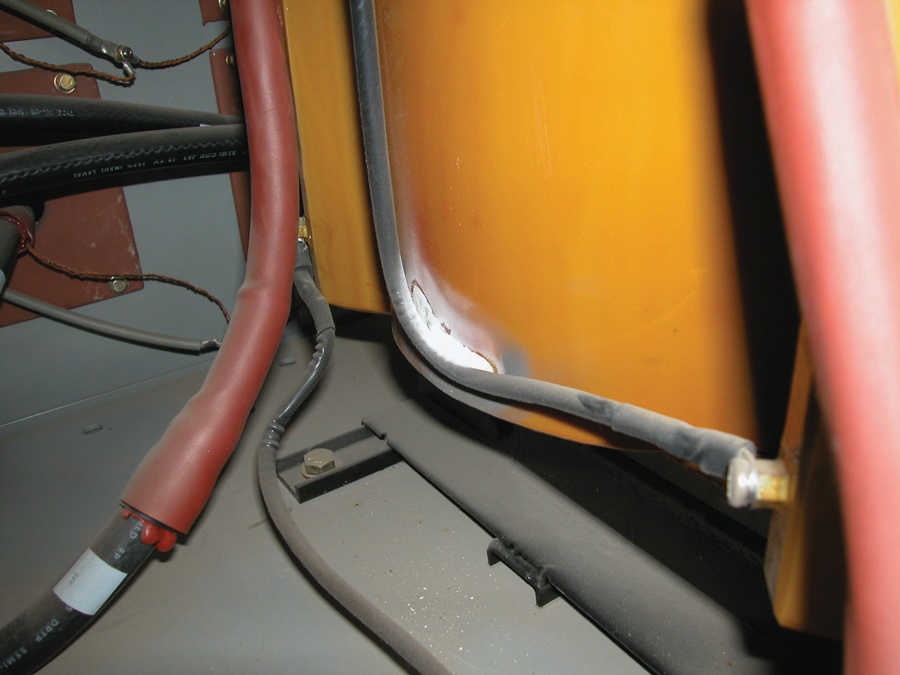This is the last in a three-part series of articles as we navigate a 15 kV feeder fault and the subsequent repairs. We have discussed how NFPA 70E is an important tool for the electrical worker to use in the field as they troubleshoot, repair, and restore electrical equipment after a significant fault event, all with an eye on getting the facility up and running as quickly and safely as possible. We have assessed the risks, established an electrically safe work condition, planned the tasks, and looked at the qualifications of the workers who are performing the repairs.
In Part 3, we review the use of proper tools and appropriately rated portable meters and leave you with a look at condition of maintenance as we finalize the repair activities.
WHAT HAPPENED?
The main circuit breaker in one of the plant’s three medium-voltage substations experienced a fault, arc-flash event, and subsequent trip of the entire lineup, apparently due to a rodent that caused a phase-to-phase fault in the 15 kV potential transformer (PT) compartment. The fault traveled into the medium-voltage bus assembly in the metalclad switchgear lineup, ultimately causing the main breaker to trip, and de-energizing a large portion of the facility.

Faulted 15 kV Equipment
METERS, TOOLS, AND QUALIFICATIONS
If you have been in the electrical service industry for any length of time, you have probably heard of someone using an improperly rated meter on a piece of equipment. When these events occur, it is often due to a low-voltage digital multimeter (DMM) or a solenoid-operated meter that is applied to a medium-voltage component resulting in electrical failure and/or arc flash event.

Faulted PT Compartment
Understanding the use and application of test instruments is an important aspect to an electrical worker, as it can be the difference between an injury-free career or serious injury/death. In the scenario in this article, it is important to have the right tools and equipment on the job.
NFPA 70E recognizes this and references portable meters and test instruments several times. But even before tools are selected, first and foremost, you must be qualified! We talk about it a lot, and it’s important to once again review and understand the 70E definition of a qualified person:
Key Point: Qualified Person
One who has demonstrated skills and knowledge related to the construction and operation of electrical equipment and installations and has received safety training to identify the hazards and reduce the associated risk.
Going back to the situation where someone applies a DMM to a medium-voltage component, do you think that person was qualified? Most likely not, and rest assured, a post-incident investigation, especially if OSHA is involved, will focus on the skills and knowledge of that person to determine whether they are considered a qualified person.
CAT Ratings of DMMs
Electrical workers should understand the category rating found on DMMs. The CAT rating provides information on the multimeter’s ability to withstand transient overvoltage conditions that could cause the meter to fail and possibly injure the worker.
Your DMM should be at least CAT III-rated. For a higher degree of protection, look for a CAT IV rating. Most industrial DMMs are rated as CAT III for use on systems below 1,000 volts and CAT IV for use on 600-volt and below systems.
Throw away that old meter from the auto parts store — you shouldn’t be using it in an industrial setting!

Qualified Worker Using DMM
Key Point: Article 110.8 Test Instruments and Equipment
(A) Testing. Only qualified persons shall perform tasks such as testing, troubleshooting, and voltage measuring on electrical equipment where an electrical hazard exists.
(B) Rating. Test instruments, equipment, and their accessories shall be as follows:
(1) Rated for circuits and equipment where they are utilized
(2) Approved for the purpose
(3) Used in accordance with any instructions provided by the manufacturer
When determining your test equipment strategy and capital expenditure requirements, you should do some research as to what equipment is the best for required tasks, and who has responsibility for the procurement and maintenance of the equipment.
Because it is a critical component of safety, most companies provide portable test meters to their employees so that training, quality assurance, maintenance, and calibration can be controlled with internal policies and procedures. If you don’t have a process for determining these aspects, you should implement one, or make sure you have minimum requirements and policy guidance for any personally owned meters and equipment used on the job. See the sidebar on CAT Ratings.
LIVE-DEAD-LIVE
One of the most important test procedures an electrical worker needs to do each and every day is to perform an operation verification, also known as the live-dead-live test.
During testing and troubleshooting, especially when testing for the absence of voltage before working on the equipment, you must have assurance that the circuit is indeed de-energized, or dead. The best way to do this is to perform a live-dead-live test on the component.
First, check the meter on a known (live) source. It could be a 120-volt extension cord or an external source provided by the instrument manufacturer, but whatever you use, make sure the meter is functioning.
Second, without changing any of the meter scales or dials, test the component you intend to work on and verify a de-energized (dead) state.
Third, again without changing any of the meter scales or dials, test the meter again on a known (live) source to assure the instrument’s operation.
Key Point: Article 110.8 Test Instruments and Equipment
(E) Operation Verification. When test instruments are used for testing the absence of voltage on conductors or circuit parts operating at voltages equal to or greater than 50 volts, the operation of the test instrument shall be verified on any known voltage source before and after an absence of voltage test is performed.
The 1932 book Human Engineering by Harry Myers and Mason M. Roberts stated: “Doctor, years ago, I had a foreman who taught me a great deal. He was quite a philosopher. One day he said, ‘William, you must learn from the mistakes of others — you will never live long enough to make them all yourself.’”
Case in point: Many years ago, I was working on a 480-volt motor control center. Preparing to test the MCC buckets, we opened and locked out the MCC A1 feeder breaker in the powerhouse. I used my DMM to test for the absence of voltage and got a zero-voltage reading. What I did not do was test the meter on a known source before and after the absence of voltage test. What I also did not know was that the rotary-dial meter I was using was in between scales, and while in that state, it would not read voltage.
Knowing (thinking) the source supply was off, I turned my head and tapped the temporary personal ground to the bus, and a large boom and flash occurred. Anyone who has ever heard the 480-volt shotgun-blast fault knows what it sounds like. The supply feeder breaker tripped, and there was no damage or injury. Which breaker tripped in the look-alike powerhouse? Feeder Breaker MCC A2.
A simple procedure of live-dead-live testing would have prevented this incident. “You must learn from the mistakes of others — you will never live long enough to make them all yourself.”
Key Point: Article 120.5 Process for Establishing and Verifying an Electrically Safe Work Condition
(7) Use an adequately rated portable test instrument to test each phase conductor or circuit part to test for the absence of voltage. Test each phase conductor or circuit part both phase-to-phase and phase-to-ground. Before and after each test, determine that the test instrument is operating satisfactorily through verification on any know voltage source.
While the 70E states in 120.5 (8) that you should apply temporary protective grounding equipment where “the possibility of induced voltages or stored electrical energy exists,” and assuming it’s physically possible, it’s a good idea to always apply temporary protective grounding equipment to the equipment you are working on.
CONDITION OF MAINTENANCE
In the scenario explained in this article, the work has been completed and the circuit was safely placed back online. However, for future operation and interaction with the (once faulted) medium-voltage feeder, we should discuss condition of maintenance as well.
Why do we care about the condition of maintenance of electrical equipment? Quite simply — to save lives and prevent injuries!
We know that electrical equipment that has not been properly maintained can affect the operation of the protective devices, which can increase the times to clear faults and affect incident energies and system coordination.
A slow-operating overcurrent protective device (OCPD) that does not clear a fault because of lack of maintenance can cause incident energy analysis studies to be incorrect, PPE selection can be inadequate, and severe injury or death could occur, especially if the electrical worker did not know that the device had not been properly maintained.
How do we assure our workers that the equipment they are working on is safe to do so? Perform proper maintenance on it and assure normal operation. NFPA 70E Article 110.4 (D) Normal Operating Condition gives us six conditions that all must be met for equipment condition to be classified as “normal.”

Condition of Maintenance — Impending Failure
Key Point: Article 110.4 Energized Work
(D) Normal Operating Condition. Normal operation of electrical equipment shall be permitted where a normal operating condition exists. A normal operating condition exists when all of the following conditions are satisfied:
1. The equipment is properly installed.
2. The equipment is properly maintained.
3. The equipment is used in accordance with instructions included in the listing and labeling and in accordance with manufacturer’s instructions.
4. The equipment doors are closed and secured.
5. All equipment covers are in place and secured.
6. There is no evidence of impending failure.
Properly maintained means that the equipment has been maintained in accordance with the manufacturer’s recommendations and applicable industry codes and standards.
Electrical workers and their management must understand the impact of maintenance to electrical safety. Without proper maintenance and documentation, the worker will be exposed to additional hazards, risks, lower overall reliability. There is the additional risk of potential catastrophic equipment loss.
From the date of installation and throughout the life of the equipment, it is incumbent on us all to be diligent in our efforts to properly maintain electrical power equipment, doing so in accordance with manufacturers’ recommendations and industry codes and standards.
Know the condition of maintenance — it can greatly help in our quest for an incident-free workplace.
And don’t forget — test before touch…and perform a live-dead-live process to check portable meter operation!
 Ron Widup is the Vice Chairman, Board of Directors, and Senior Advisor, Technical Services for Shermco Industries and has been with Shermco since 1983. He is a member of the NETA Board of Directors and Standards Review Council; a member of the Technical Committee on NFPA Standard for Electrical Safety in the Workplace (NFPA 70E); Principal member of the National Electrical Code (NFPA 70) Code Panel 11; Principal member and Chairman of the Technical Committee on Standard for Competency of Third-Party Evaluation Bodies (NFPA 790); Principal member and Chairman of the Technical Committee on Recommended Practice and Procedures for Unlabeled Electrical Equipment Evaluation (NFPA 791); a member of the Technical Committee Recommended Practice for Electrical Equipment Maintenance (NFPA 70B); and Vice Chair for IEEE Std. 3007.3, Recommended Practice for Electrical Safety in Industrial and Commercial Power Systems. He is a member of the Texas State Technical College System (TSTC) Board of Regents, a NETA Certified Level 4 Senior Test Technician, State of Texas Journeyman Electrician, a member of the IEEE Standards Association, an Inspector Member of the International Association of Electrical Inspectors, and an NFPA Certified Electrical Safety Compliance Professional (CESCP).
Ron Widup is the Vice Chairman, Board of Directors, and Senior Advisor, Technical Services for Shermco Industries and has been with Shermco since 1983. He is a member of the NETA Board of Directors and Standards Review Council; a member of the Technical Committee on NFPA Standard for Electrical Safety in the Workplace (NFPA 70E); Principal member of the National Electrical Code (NFPA 70) Code Panel 11; Principal member and Chairman of the Technical Committee on Standard for Competency of Third-Party Evaluation Bodies (NFPA 790); Principal member and Chairman of the Technical Committee on Recommended Practice and Procedures for Unlabeled Electrical Equipment Evaluation (NFPA 791); a member of the Technical Committee Recommended Practice for Electrical Equipment Maintenance (NFPA 70B); and Vice Chair for IEEE Std. 3007.3, Recommended Practice for Electrical Safety in Industrial and Commercial Power Systems. He is a member of the Texas State Technical College System (TSTC) Board of Regents, a NETA Certified Level 4 Senior Test Technician, State of Texas Journeyman Electrician, a member of the IEEE Standards Association, an Inspector Member of the International Association of Electrical Inspectors, and an NFPA Certified Electrical Safety Compliance Professional (CESCP).
